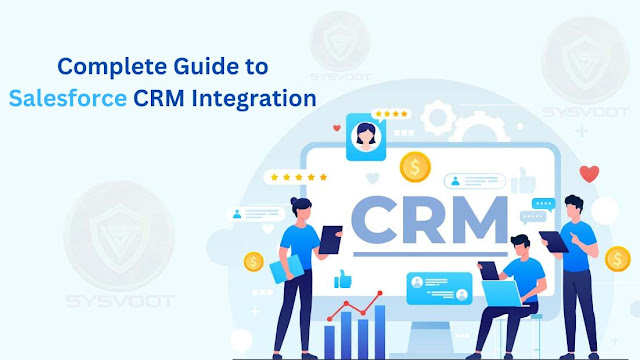If you’re interested in Salesforce CRM integration, you’ve come to the right place. In this article, we’ll cover how to integrate your system with other applications and create a unified source of truth. You’ll also learn how to control and monitor integrations. And we’ll look at how to integrate with an external system.
Benefits of Salesforce CRM for Businesses
For businesses, regardless of size, there is Salesforce CRM integration to build relationships with their customers and provide them with a personalized experience.
Image Source: Sysvoot
Marketing Automation
Automation eliminates most of the time-consuming and tedious work, ensuring customers receive relevant and personalized information at the right time and on the right platform.
Interaction with Customers
Communication is always scalable as the market changes and evolves, all because of the cloud-based Salesforce platform.
Automation and AI
From lead generation to proactive customer service and account management, Salesforce tools save admin and management time, free up staff for higher-value operations, and eliminate the possibility of human error.
Business Reporting
Forecasts are based on real-time data and market trends, not theoretical figures in spreadsheets. With this in mind, Salesforce works.
Team Integration
Getting information about your customers from one source is one-way, so Salesforce integrates data so all your representatives can work together.
Salesforce CRM Integration Process
Now coming to Salesforce integration, there are many ways to do it. The Salesforce integration process will help you understand your business goals, so develop a comprehensive plan and provide training for your team to make your Salesforce integration assistance more useful. There are two ways to do this:
Application-based Salesforce integration
Most companies around the world use Salesforce to organize data, generate leads, and provide effective customer service. In addition, several third-party applications integrate with Salesforce to simplify CRM with enterprise applications and reduce data duplication
Integrating Salesforce CRM with external systems
When integrating Salesforce CRM with other systems, you ensure data synchronization and data integrity. Without this integration, departments often feed data into other systems that is inconsistent and inaccurate. Additionally, they may use different tools to perform their work, making it more difficult to maintain data consistency. Salesforce CRM integration helps you to automate many processes and create more integrated solutions for your company.
There are two main types of integration with other systems: batch-based integration and real-time integration. Batch-based integrations lag in processing data, while real-time integrations give you access to data and documents instantly. Both types of integration can be useful for synchronizing data between Salesforce and external systems. Before starting an integration project, it is important to assess your current systems and your business requirements. A Salesforce consulting partner can help you determine whether your Org is ready for integration. They can also perform a health check on your current system to identify what it requires and what it can handle. Ultimately, Salesforce CRM integration helps you fill in gaps and increase productivity by automating repetitive tasks.
Creating a unified source of truth
Having a single source of truth is vital to creating a holistic view of your data, allowing you to personalize your customer experience at scale. This unified view is essential for marketing, sales, and customer service. In addition, the single source of truth makes data easier to access and manage. Creating a unified source of truth is similar to creating a corporate data warehouse, except that the database and analytic toolset are built into Salesforce. However, before making a decision on which database to use, you should consider how many people will need to access the data. If there are many users, Salesforce could be more cost-effective than a data warehouse. Creating a unified source of truth involves automating large data flows and integrating these data with other business systems. With this, companies can avoid repetitive tasks and eliminate human error. For example, if you’re in charge of sending out emails, you can send relevant and personalized emails to your clients based on their preferences.
Monitoring and controlling integrations
Customization is key to the success of any Salesforce CRM deployment, and adding plugins can allow greater control over sales data and insights. But each new integration adds latency to pages and the application, and it is important to understand the impact of each on performance. Furthermore, as a company grows, there may be a corresponding increase in contacts and the number of integration points, making day-to-day performance even more important. It is essential for IT managers to weigh the potential customization gain against the performance costs. Monitoring and controlling Salesforce CRM integrations can be complicated, but with the right tools, it can be easy to get your hands on all the data you need. A popular tool is Campaign Monitor. It integrates with Salesforce and helps marketers build campaigns to reach as many customers as possible. It supports many common email marketing campaigns and includes many features that help marketers track customer data
Looking for a complete solution to connect advertising, marketing, sales, customer service, and back-office procedures? Hire CRM consulting firm offer the next generation of CRM services to give the boost your business is looking for.


